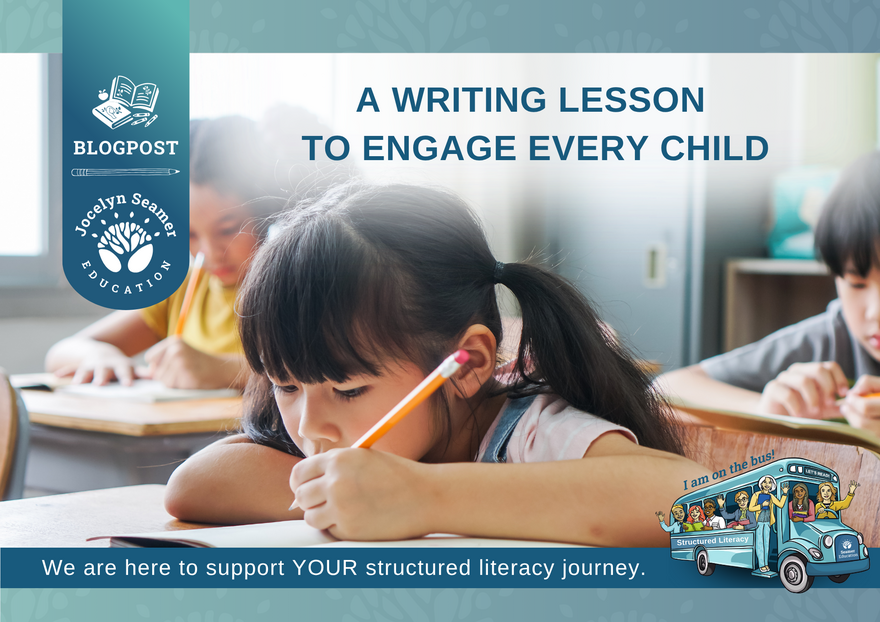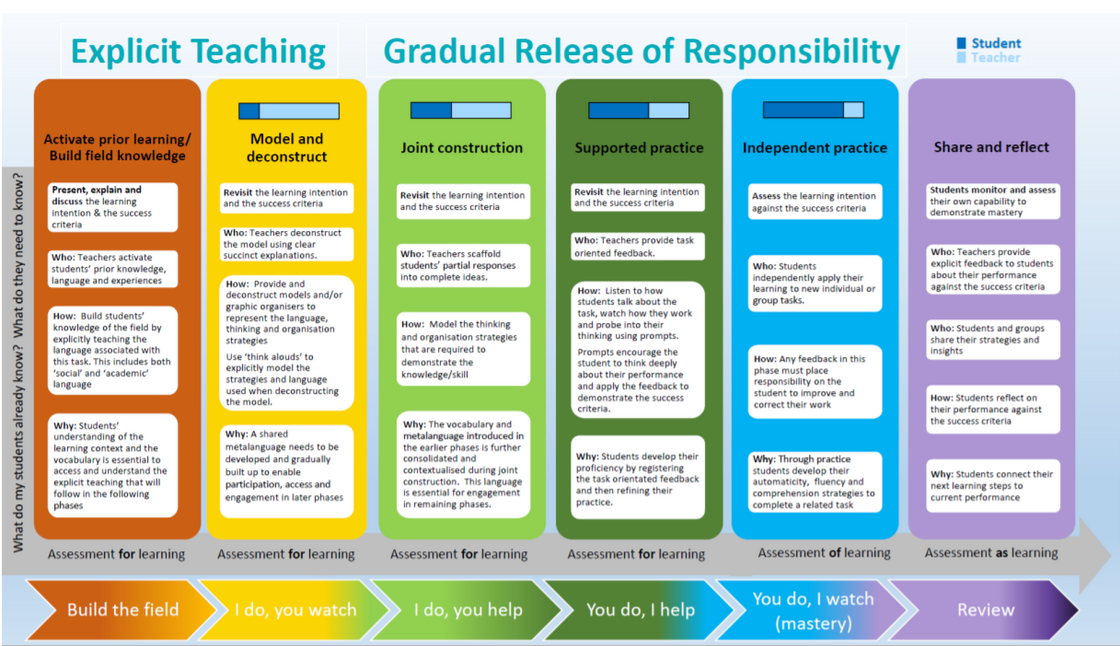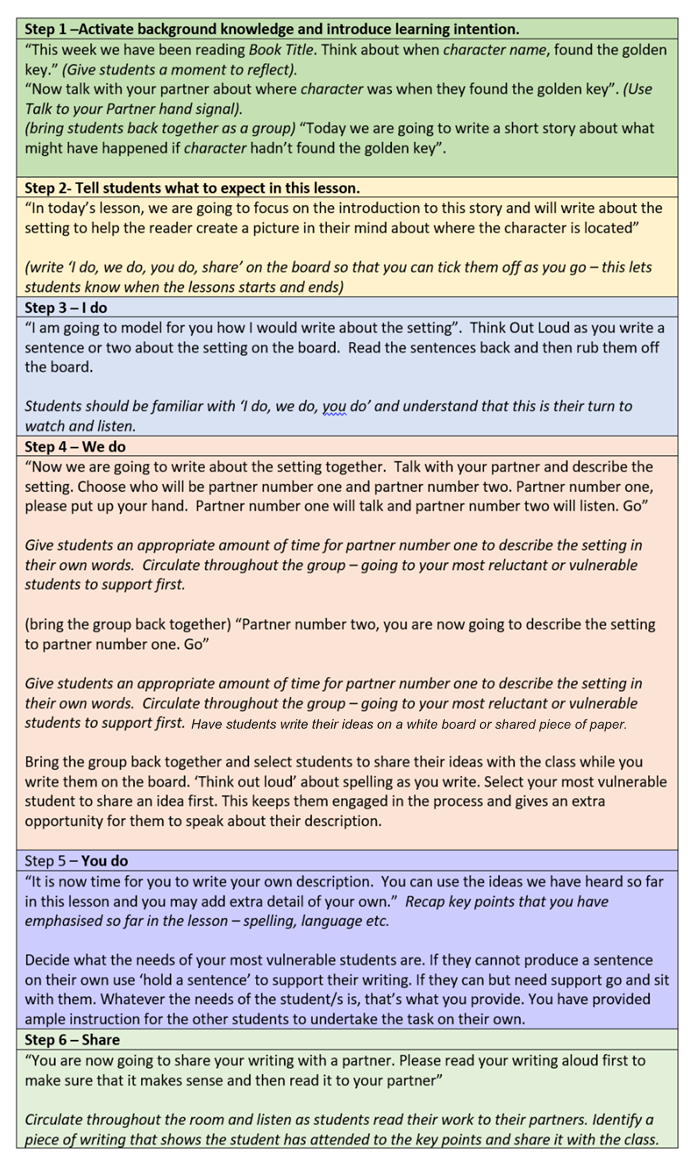A Writing Lesson to Engage Every Child

Last week’s post talked about some of the finer points of language selection to support our students' writing development and suggested that there really isn't a need to have small group instruction in order to reach every child. What I didn’t get time to do was to explain exactly what this might look like in your classroom. So gather round as I tell you a story.

There was once a teacher who tried her very best every day to help her students learn to write. She modelled using the structure, the sorts of language students should strive to use, how to decide when to create a new paragraph and read this back to the students. She then moved on to ‘shared writing’. She started with a new topic and asked the class for their ideas of what to write next. She even gave them clues when they got stuck and referred back to the modelled piece she had already shown them. As students put their hands up she called their names and included their contributions in the shared piece of writing. It bothered her that there were children who never put their hands up, but the teacher didn't want to call on them and embarrass them if they didn't know what to say. Finally, she moved to the guided writing part of the lesson. The teacher sent students off to their desks to have a go at their own versions of the piece of writing. Some students went off happily and got started. They knew what to do. Others are a little less confident, but they were able to produce something like what the teacher was looking for. Then there were the students who always struggled. The ones who never put their hands up to contribute. The teacher knew that these children needed more support so she sat them together and worked with them. No matter what she tried though, they just couldn't put pencil to paper on their own. The caring teacher knew that if she walked away from them she would return to find the exact same amount of writing on their paper as when she left so she stayed with them. The problem was that while she was helping that group (essentially feeding them the whole piece of writing) other children started putting up their hands, needing help. The teacher felt torn and helpless. Should she walk away from the group who desperately needed her? Should she stay with them knowing that the other children were ‘better able to cope’? Neither of these options sat well with the teacher. Someone missed out and no matter what she did. She couldn't but feel that she was letting her students down.
Is this a work of fiction? Nope. It's the situation that exists in our classrooms each and every day. I know this because I have been exactly there. I have been on that guilt trip and come home without the T-Shirt.
So what’s the alternative? The Explicit Teaching Model! (The one below is from the Northern Territory Department of Education)

“Yeah, yeah” I hear you say. We’re already doing ‘I do, we do, you do’.
Let me show you a different way of putting it into action.
- Build the field
Building the field is about tuning children in. It takes about a week (or longer) and gives all students in the class the opportunity to interact with a mentor text in depth BEFORE we ask them to write something. - Model and Deconstruct
As the example above shows, we are all quite used to modelling and deconstructing at text level. It’s a key part of the modelled, shared, guided writing process. But what about sentence level? What about word level grammar? We might be doing some surface level word level grammar work, but how often do we extend that to include using that grammar in the context of real sentences of various types?
- Joint Construction
Switching your joint construction from what I described at the start of the post to a ‘full engagement’ joint construction is a game changer. Instead of having students share ideas one at a time (and only a quarter of the class at that), have the students work in small, mixed ability groups before feeding answers back. Give every child a pencil to contribute in the way that matches their current level of transcription and then asked the groups to share something with the class.
- Supported Practice
If you build the field, model and deconstruct and jointly construct well, supported practice isn’t nearly as hard (even for the struggling students). In order for supported practice to work in a way that doesn’t leave you wishing you could clone yourself 11 times every lesson, you need to carefully match the expected task with the students’ current level of transcription skill. If the student can’t write more than one sentence. Don’t ask them to write a full text. Also remember that support can take many forms other than having you right there. Working with a partner, having picture prompts and repeating the task you have just done as the joint construction are also forms of supported practice.
- Independent Practice
Only ask children to write independently when they know how. Again, match your expectations of student writing output to their actual level of transcription and include transcription work in your explicit lessons so that children are continually building skills.
Let’s see what this lesson might look like in your classroom. This lesson structure is applicable regardless of age.

It is possible to engage every child in writing and move away from the guilt ridden, ineffective lessons that leave you feeling helpless. Applying the explicit teaching model and making sure that students are engaged every step of the way, will make a significant difference to your teaching and your students' learning.

 Jocelyn Seamer Education
Jocelyn Seamer Education
0 comments
Leave a comment